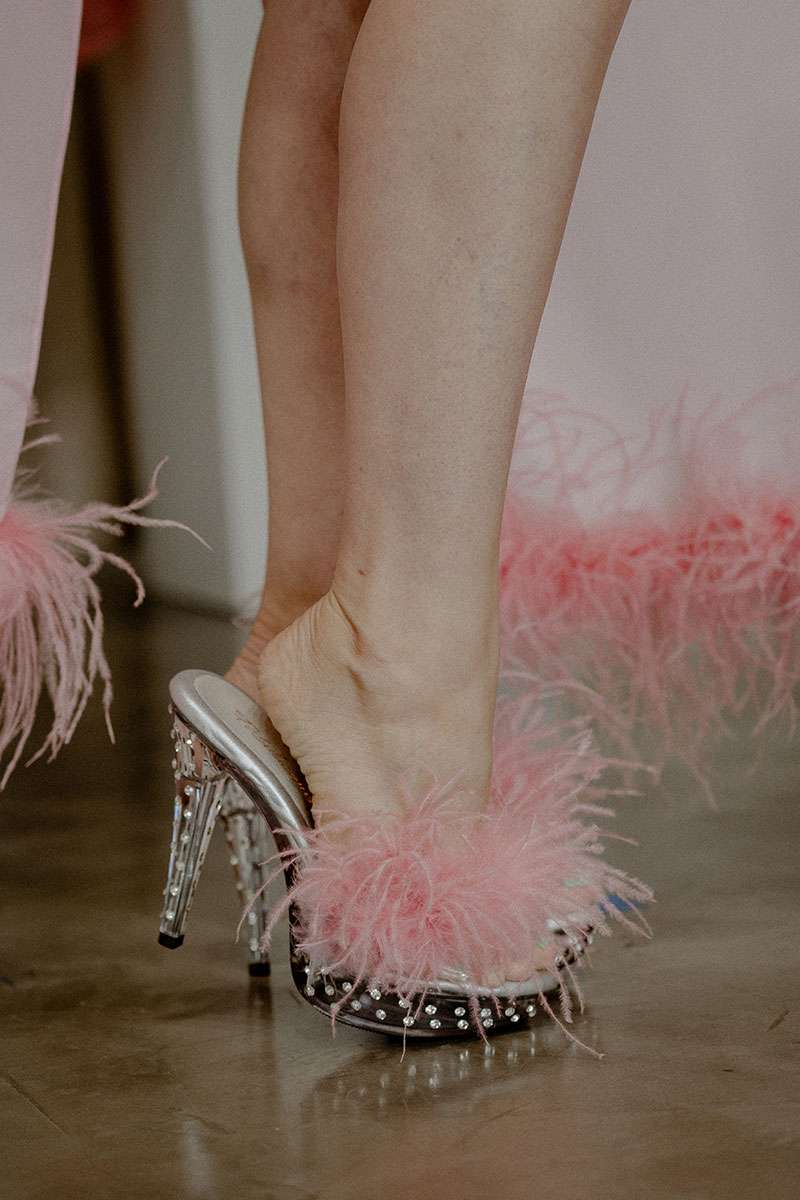
Did you grow up with the myth that “love is all you need” to make a marriage last? From a psychotherapist and relationship coach Gloria Zhang’s perspective, here’s why that’s a pile of doo-doo, and what you should do instead…
During the last legs of my former relationship, I felt like a deprived puppy begging for scraps of affection. Like most relationships, it started off just fine and seemed to reach a plateau. That is until we found ourselves in the most popular case of couple’s Russian roulette: The Pursuer-Distancer dynamic.
Sound familiar?
I felt needy and they felt trapped.
The clingier I became, the more they needed space.
And every time my partner got annoyed; I would get a flashback to being a seven-year-old kid again who was receiving the cold shoulder from disappointed daddy.
The mindboggling part is that neither my partner or I were “bad people”. We genuinely loved each other and had soccer-field sized list of common interests. So why couldn’t we meet the other person’s needs?
Despite the seductive appeal of “Rollercoaster Relationships” that is oh-so-glamorised in Hollywood (The Notebook, anyone?), it makes for a miserable love life.
And it is trust and safety that makes for a lasting relationship, not drama.
The key to improving, and maybe even rescuing your own relationship is understanding WHY this dynamic occurs between you and your partner.

It can be summarised in two words: Attachment Styles.
It’s not a surprise that the way that your parents or caregivers treated you as a child directly influences the role you play in your adult relationships.
When you were just a tiny little thing that burped and cried, your caregivers were literally the first human beings that you “attached” to. How attentive they were to your needs, how loved they made you feel and how they taught you to handle conflict – we absorb ALL of these experiences as a “blueprint” and carry them into our adult lives.
Even more interesting is how your parents unconsciously influenced your romantic “type”. Have you ever had an unpleasant realization that your honeyboo kind of reminds you of mum or dad?
Not a coincidence! As living beings, we are simply drawn towards what’s familiar. And the specific way that you connect with your intimate partner is considered your “Attachment Style”.
Research has shown that there are in fact four different Attachment Styles that we loosely fall under. Can you identify yourself and your partner?
About half of the population falls under Secure Attachment, meaning that you feel comfortable being close in relationships, but you’re also secure being on your own. For the most part, you had your emotional needs met growing up and therefore you generally trust people. Score!
What if you’re clingy and anxious? About 20% of the population falls under Anxiously Attached (also known as Anxious-Preoccupied), which means that you tend to be the “chaser”. Usually, you are someone who needs more reminders and validation that you are loved. Waiting a long time for a text makes you anxious. You might have abandonment fears or felt unheard when you were a child and when your needs aren’t met, it’s normal to feel paranoid and even jealous.
What if you’re aloof and distance, like my ex was? About one-quarter of the population is considered Avoidantly Attached (also known as Dismissive-Avoidant) meaning that you tend to be the “runner” in your relationship. Generally speaking, you are afraid of emotional intimacy and require more space than other people. It’s not that you don’t desire love, but you have a harder time facing conflict and letting others in. You’re also the type to retreat into your shell when you feel smothered. You might have had helicopter parents or was ignored as a child.
Anxious and Avoidants are also notorious for attracting each other like moths to a flame. You end up having the same dynamic I had, where one person is chasing while the other runs away.

There’s also a fourth category called Disorganized Attachment (Fearful-Avoidant) who both cling and push away at the same time. It usually describes people who have experienced abuse and neglect, and feel unsafe no matter how they try to respond to their partner. However, you can also be Disorganized if your caregivers were inconsistent when raising you and sent you mixed messages. For example, pressuring you to get good grades, and then criticizing you for staying up late to do homework. A common experience for people with Disorganized Attachment is “collapsing” because they don’t know whether to turn towards their partner, or run away from them.
For tons of folks, learning their attachment style is a big aha! moment that explains why their partner acts the way they do in the relationship.
So, the big question is, how do you fix things?
The good news is that research shows it is possible for people to become more Secure over time! In fact, there are a few things that you and your partner can start doing right away.
First, you need to heal your inner child by meeting your own needs and not completely relying on your partner.
Afraid of people leaving you? Start building an internal feeling of security and self-love, so that you’re not clinging onto others from a place of dependency.
Terrified of being trapped in a relationship? Learn to stay present with discomfort, instead of running way and shutting out the other person.
Second, accept the way your partner is and make an extra gesture to help them feel more secure.
Your anxious partner may always need an extra text message or reassuring word to feel safe.
Your avoidant partner may always need another hour of alone time.
It’s about choosing to empathise with and meet your partner’s unique needs, even if they don’t look the same as your own.
Isn’t that what love is really about?
I’ve certainly learned a lot from my last relationship and I’m glad to be an example of how understanding Attachment Styles may be the very thing that moves you towards a happy, long-lasting relationship! With my current honeyboo, we accepted each other from the get-go and always made that extra effort to make each other’s lives more comfortable.
And I know that’s part of the reason why after all this time, we’re still happy together.
I’ve traded up the rollercoaster for the Ferris Wheel.
And it’s just as great of a view and exhilarating, except with a lot less nausea.
Want to know your Attachment Style? You can take a free quiz at scienceofpeople.com/attachment-styles
About Gloria Zhang, MA
Gloria is an ink-lovin’ Psychotherapist and Relationship Coach based out of Canada, and host of Top 100 show The Inner Child Podcast. Gloria helps High Achievers break the pattern of toxic relationships and create lasting love by healing the inner child. You can find out more about her at bygloriazhang.com and follower her on Instagram @bygloriazhang.
This article originally appeared in issue 42 of Rock n Roll Bride magazine. You can purchase the latest copy here, or why not subscribe to never miss an issue?
Suppliers
- Photography: The Combs Creative
- Styling: P3 Events
- Hair + Makeup: Silk & Style
- Venue: Midcentury Manor
